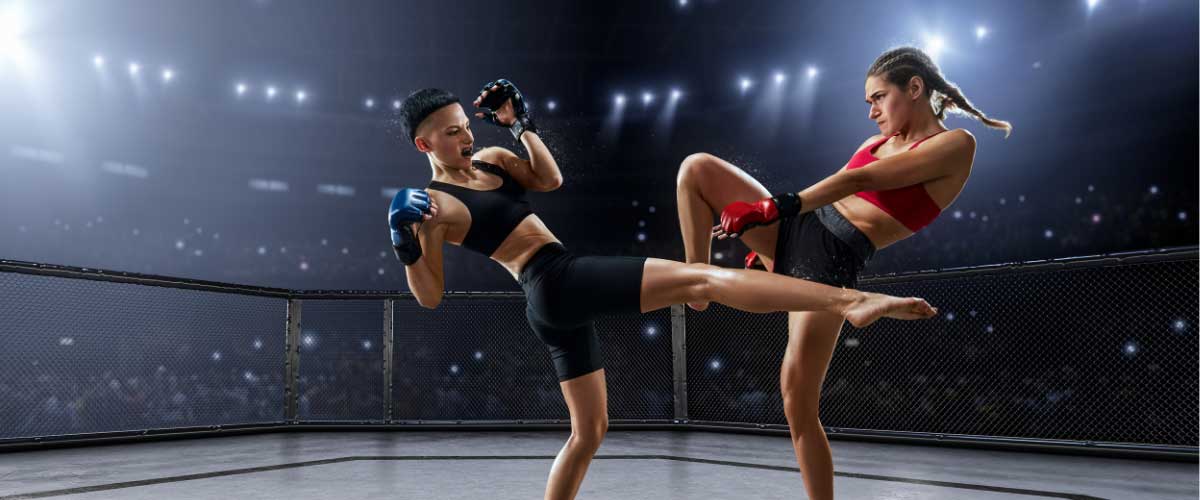
MMA Knee Injuries: An Overview
The UFC or Ultimate Fighting Championship® organization is one of the most popular MMA organizations in the world. MMA, or mixed martial arts, incorporates numerous styles of fighting including karate, judo, nunchuka, savate and kickboxing. This highly competitive sport has become very popular among beginners and professionals alike. Because of the nature of MMA, knee injuries are a common occurrence during practice and fighting events. While less severe cuts or lacerations are to be expected during a fight, athletes can also experience mild, or sometimes severe, knee injuries. MMA fighting techniques vary in intensity and the knees can undergo a great deal of stress among fighters. Common knee injuries include ACL tears, MCL tears, patella dislocation, meniscus tears and complex knee injuries. Dr. James Mazzara, orthopedic knee specialists serving patients from Manchester, South Windsor, Enfield, Glastonbury and the surrounding Hartford communities specializes in knee injuries and is able to get MMA fighters back to the sport they love quickly and at their pre-injury levels.
MMA Knee Injuries in Competitive Fighters
When an MMA fighter enters the ring (or “cage” as some call it), their knees are subjected to an incredible amount of stress. Many fighting styles require quick twists, pivots and turns and can cause abnormal positioning for the knee during these maneuvers. For instance, the heel hook, which involves the knee joint and the lower body, puts the knee in a prime position for damage or injury. It is quite common for MMA athletes to experience an ACL tear, patella dislocation or MMA meniscus tear while competing or even while training for a fight. MMA Knee injuries can also be caused by overuse or over-training, not just from a traumatic event for fight.
MMA ACL Tears Overview
The ACL or anterior cruciate ligament is one of the most commonly injured knee ligaments in MMA. The ACL runs through the center of the knee from the back of the femur (thigh bone) to the front of the tibia (shin bone). The ACL keeps the knee in line, and prevents the tibia from sliding out, in front of the femur. Most ACL tears in MMA occur when the fighter stops suddenly, applying force on the knee, or when they change directions when the knee is planted. Both of these movements can cause the knee joint to move in an unnatural manner, making it buckle and shift. MMA ACL tears are also seen during a fight, when there is a direct blow to the joint from a kick or hit.
Meniscus Tear in MMA Overview
The meniscus in the knee is a strong piece of wedge-shaped cartilage that acts as a shock absorber between the bones of the femur and the tibia (thigh and the shin bones). A meniscus tear is another common knee injury in MMA fighting and can be caused by an awkward landing from a kick or from twisting the knee as they go into a squat position. When the meniscus is torn during MMA, the location of the tear is critical to the treatment process. The outer 1/3rd of the meniscus can often heal on its own because it is in an area with a rich blood supply called “the red zone.” The remaining 2/3rds of the meniscus does not have the benefit of a blood supply and is located in what is called “the white zone.” This part of the meniscus cannot heal by itself and often requires surgery.
Non-surgical options for an MMA meniscus tear include:
- Rest
- Ice
- Anti-inflammatory medication
- Compression
- Physical therapy
- Elevation
Surgical treatment for an MMA meniscus tear
Surgical treatment is usually required when non-surgical efforts have failed to alleviate symptoms and if the meniscus is unable to heal. Surgical treatments may include:
- Arthroscopic meniscus repair
- Meniscectomy
- Partial-meniscectomy
- Meniscal repair (for tears within the red zone)
MMA Patella Dislocation Overview
The kneecap, or patella lies within a groove, or track, on the top of the femur called the patellofemoral groove. It is designed to move vertically along the groove, protecting the center of the knee joint. When the patella is moved out of its normal position, various painful symptoms can occur. Patella dislocations during MMA can occur from a direct blow to the knee, or from a sharp pivot inward of the femur when the foot is planted and the knee is bent.
When the patella is dislocated during MMA, an orthopedic specialist will begin treatment by relocating the kneecap into its correct position on the patellofemoral groove. Many fighters who experience a first-time patella dislocation can recover well with non-surgical measures which include rest, modified activities and a physical therapy program. If an MMA athlete experiences knee instability or further dislocations along with ligament damage, surgical repair may be necessary.
Treatment for MMA Knee Injuries
Dr. James Mazzara specializes in the complex knee injuries a lot of MMA athletes suffer. He treats patients from Manchester, South Windsor, Enfield, Glastonbury and surrounding Hartford communities who want to return quickly to the sport that they love. He believes in the appropriate treatment for the type of knee injury the athlete has suffered and will recommend arthroscopic knee surgery when it is the best option for complete recovery.
Have you experienced an injury to your knee during MMA? Would you like more information on MMA-specific injuries and how you can recover completely? Please contact the office of James Mazzara, MD, orthopedic shoulder, elbow and knee specialist, serving Manchester, South Windsor, Enfield, Glastonbury and the surrounding Hartford communities.